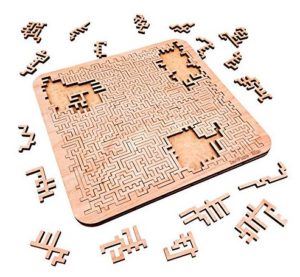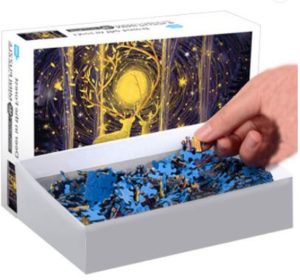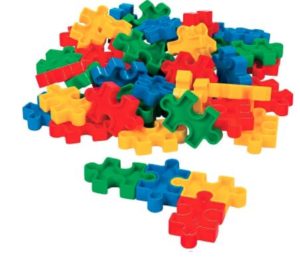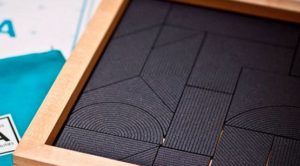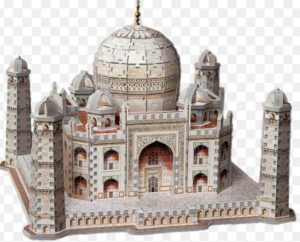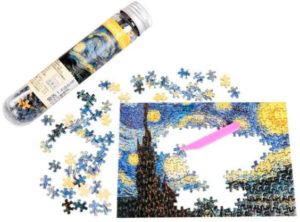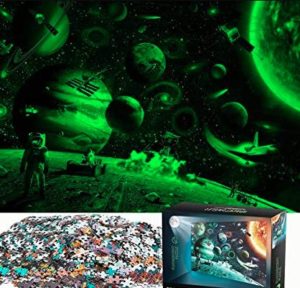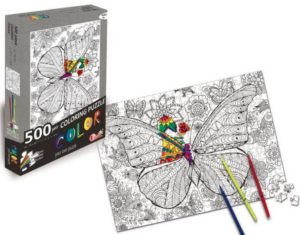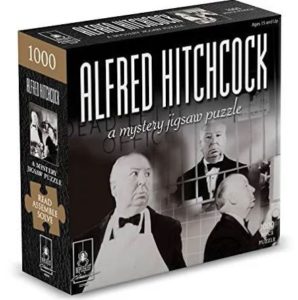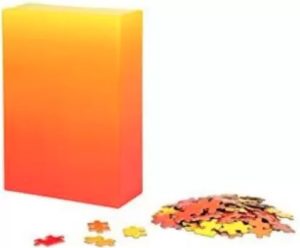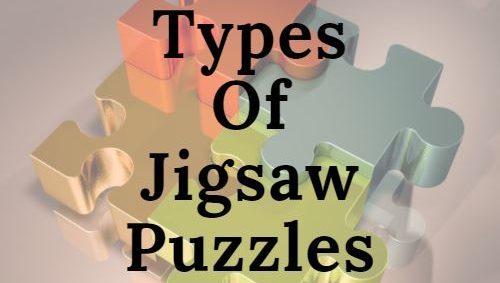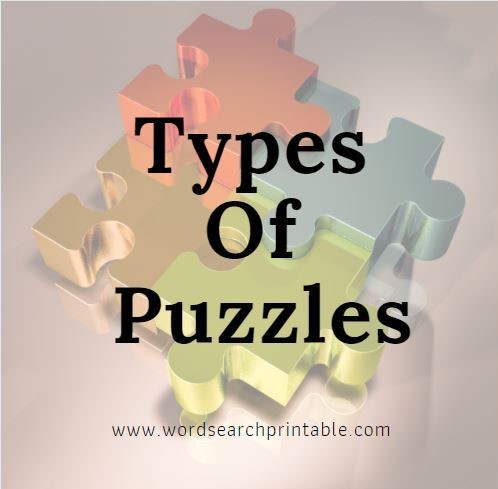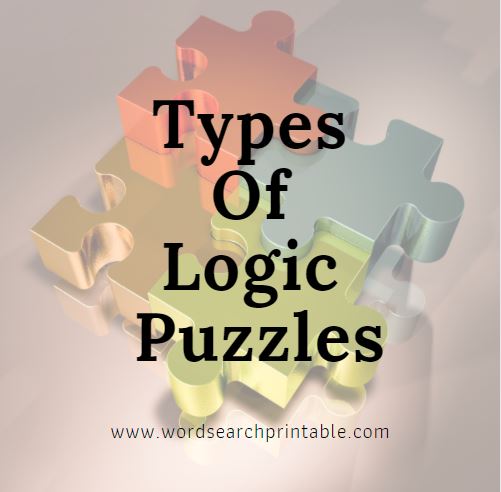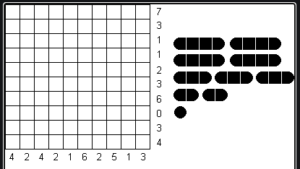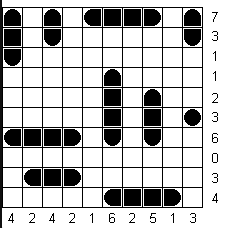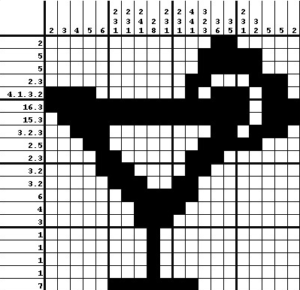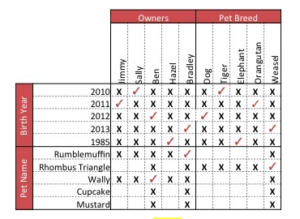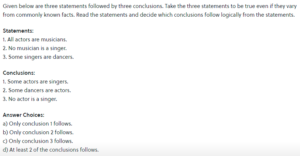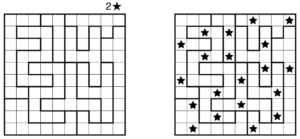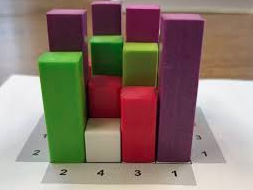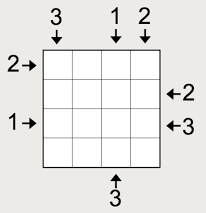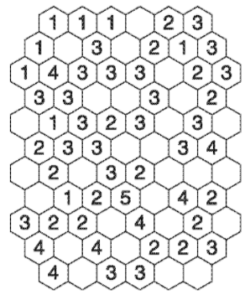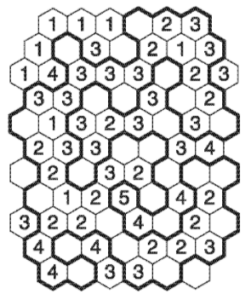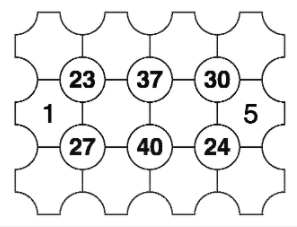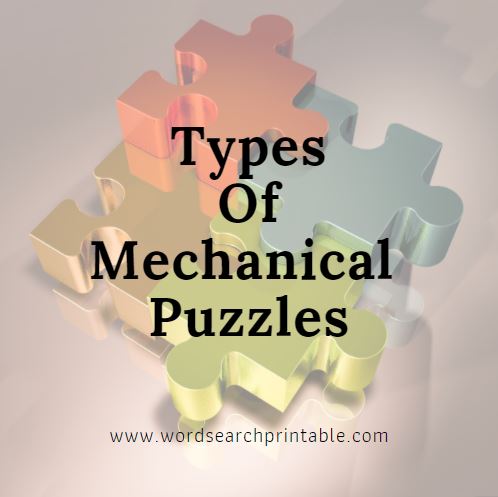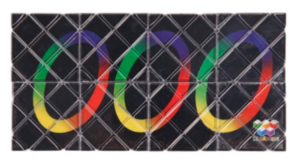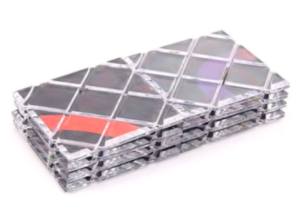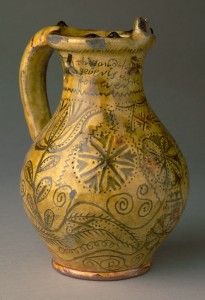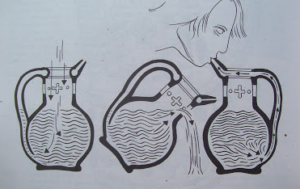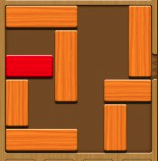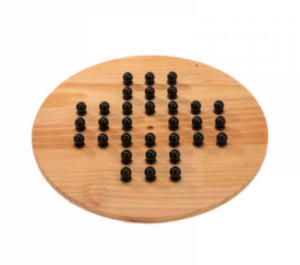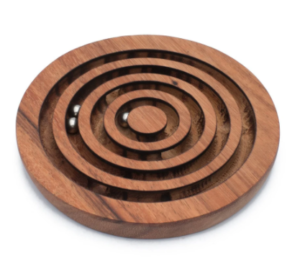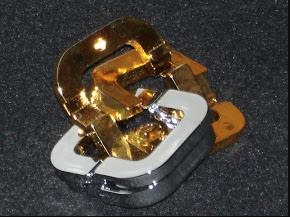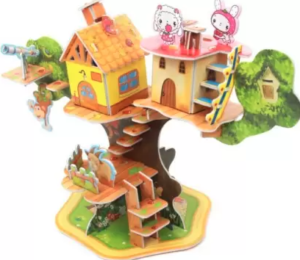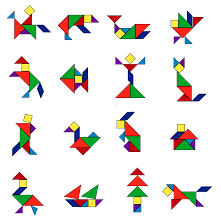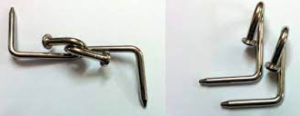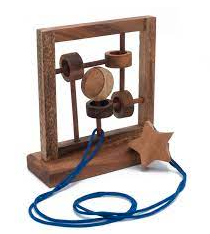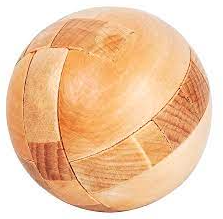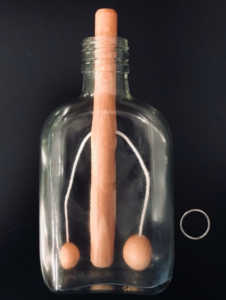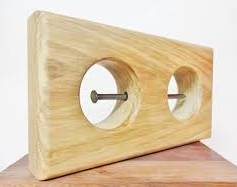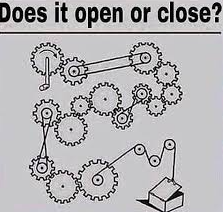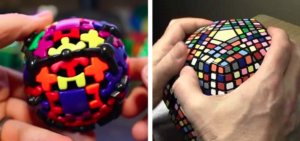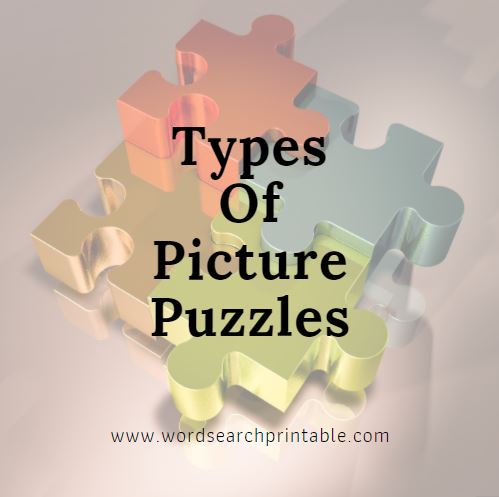Types Of Puzzles With Pictures And Examples
A puzzle is a question or trouble or contrivance designed for testing one’s intelligence, command, and the level of one’s knowledge. In this article, “Puzzles And Types Of Puzzles”, we shall look into the definition for a puzzle, features of a puzzle, types of puzzles, and a few tips for solving each type of them as well. Puzzles are categorized into various types:
- Mainly, by the types of information used for designing a puzzle such as words, numbers, symbols, etc.
- Also, based on the levels of difficulty such as easy, medium, and advanced levels, etc.
- And the age group for which it is comfortable to solve the given puzzle such as for kids, adults, young adults, etc.
Types of Puzzles
There is a wide spectrum of types of puzzles. The various types of puzzles are word puzzles, clock puzzles, logic puzzles, missing letters puzzles, math puzzles, crossword puzzles, jigsaw puzzles, peg puzzles, sorting puzzles, floor puzzles, mechanical puzzles, sudoku puzzles, cryptic puzzles, trivia puzzles, pattern guessing, general riddles, frame puzzles, connect the dots worksheets, hidden thing puzzles, spot the difference, knob puzzles.
There’s more to types of puzzles:
A few of the following types of puzzles are not age-specific but definitely logic-specific and a few of them need command over the language that is used for designing the puzzle. Hence these types of puzzles are usually tried and solved by young adults and adults. The remaining types are age-specific and are meant for kids of ages from young toddlers to elementary school-going kids. Let us now look into each of them.
1. Word Search Puzzles
Word search puzzles are one of the simplest types of word puzzles. Word search puzzles for adults and kids is a category of puzzles where the creator of them uses a list of words to disguise them in a square or a rectangle-shaped grid along with random letters. All you need to do is find the words and circle the answers in the grid so you can differentiate the rest of the grid. Not just word search puzzles, there are different types of word puzzles, the various challenging ways to test our capabilities, or just to have fun brainstorming your favorites a bit in your busy life.
Rules And Tips for solving a word search puzzle:
- The list of words you need to hunt for is usually given below each word puzzle. these are the clues to solve the puzzle.
- An easy word search has a reasonable number of words hidden from left to right or right to left. The advanced word searches have words hidden in all directions, diagonally also.
- First, look for the starting letter and the letter next to it to find the match.
- If there are twin letters in any of the words in the list, start searching them, it is easy to find them. For example, search for a set of “E E” in the grid so you can find the word SEEN.
Here’s an example, the planets word search. This is an easy word search puzzle with 8 words to find out. Check the answer how the words are actually hidden in front to back like Neptune and Mercury, back to front like Uranus and Earth, top to bottom like Saturn, bottom to top like Mars, diagonally downward like Jupiter, and diagonally upward like Venus. And there are the 8 words found.
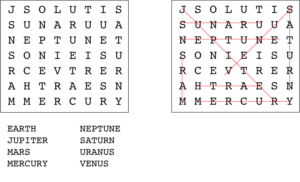
2. Clock Puzzles
Clock Puzzle is that type of puzzle which is used to test one’s aptitude and speed. These puzzles are usually used during the recruitment of candidates for various positions at a company and are a part of the syllabus for cracking various competitive exams. Clock puzzles are basically designed using different faces of a clock, different times, and different time zones at different places across the world.
Tips for solving a clock puzzle:
- The facts of the speed of a minute hand, hour hand in a clock are important to find the answers for a clock puzzle quickly. This type of puzzle has unique answers.
- 360/12 = 30°, i.e; a clock, which is a complete 360-degree circle is divided into 12 equal parts.
- 360/60 = 6°/ minute, i.e; a minute hand in a clock covers 6 degrees per minute.
- 30° in 60 minutes i.e. ½° per minute, i.e; an hour hand covers one part of the 12 equally divided parts in 60 minutes.
- The relative speed of a minute hand is 6 – ½ = 5 ½ degrees.
Here is an example of a clock puzzle.
In this clock puzzle below, with five clocks showing different times, find out what time should the fifth watch show.
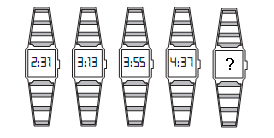
Solution: 5:19
Wondering how did I do it? Start with the time shown in the first watch, figure the difference between the first watch and the consecutive watches, which is 42 minutes in this case. Add 42 to the time shown in the fourth watch and the answer is 5:19.
3. Missing Letters Puzzles
Missing letter puzzles are designed in different ways using letters and numbers for testing the logical reasoning abilities of a person. This type of puzzle can be used during the procedures of recruitment for different positions. The solution for a missing letter puzzle usually unique. There are different levels of difficulty, like easy, intermediate, and advance.
Tips for solving a missing letter puzzle:
- Allot one number to each letter and try memorizing all the 26 letters and the numbers allotted to each of them to solve a missing letter puzzle in relatively less time.
Here is an example of a simple missing letter puzzle.
Find out the missing letter in the puzzle.
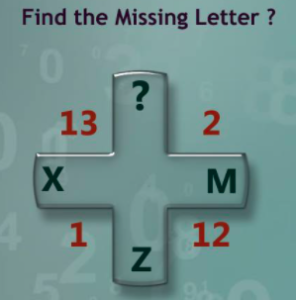
Solution: 12
Given here is the explanation for it. Firstly, follow the tip given above. Start with 13 on the left corner and multiply it with 2, the answer gives you 26. As you already know, the 26th letter in the English alphabet is Z. Follow the same procedure for the remaining consecutive numbers and you will find that the letter opposite each of the sets is the letter for which the answer you get after multiplying each set of numbers. In the same way, multiply 12 and 1, hence the answer for the puzzle is 12 the twelfth letter in English alphabets i.e; L.
4. Math Puzzles
As the name reveals, solving math puzzles needs to know mathematics and its concepts. Math puzzles are designed in such a way that it creates a sense of recreation while you sharpen your brain and learn a little more mathematics. Math puzzles are typically number and formula-based. Well. there are other varieties of math puzzles in which both numbers and figures are used to design them.
Tips for solving math puzzles:
- Brush up your basic math and formulas used in simple geometric figures.
- Begin with simple math even if the puzzle looks difficult.
Here is an example of a math puzzle.
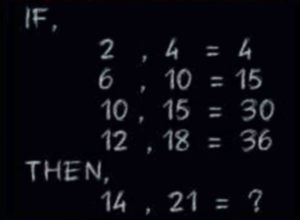
Solution: 42
In this example, you need to understand that it is important to follow tip number 1, i.e; you need to brush up your basic math like multiplication, addition, etc. In this example, allot letters A and B for a number in each set respectively. Multiply B and A, divide the answer you get by the number you obtain by subtracting A from B. In simple terms, (BxA)/(B-A) gives you the answer.
(14×21)/(21-14) = 42.
5. Crossword Puzzles
A crossword puzzle is one of the most popular types of word puzzles. It can be considered the most favorite for almost all age groups. A crossword is an easy and interesting way to test your logical reasoning skills and also your vocabulary. These types of puzzles are designed using a list of words, the clues for finding each word, and the number of boxes allotted for you to write your answer.
Tips for solving a crossword puzzle:
- Try solving the puzzle with a pencil first.
- Try to find relatively smaller words first.
- In case the given crossword is designed with a specific theme, brainstorm for the words related to the theme.
- Do not come to a conclusion until you are sure of the clue allotted to the word.
Here is an example of a crossword puzzle.
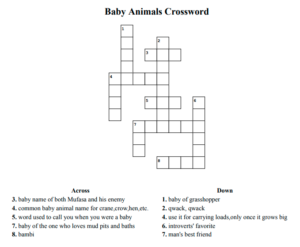
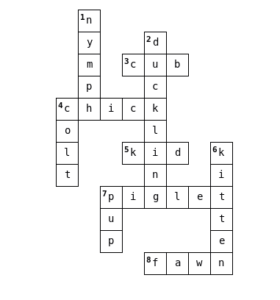
Given here is a crossword with baby animal names as its theme. You might solve it easily by recalling all the baby animals’ names you know already.
6. Jigsaw Puzzles
A jigsaw puzzle is almost everyone’s favorite type of puzzle. Unlike the types of puzzles above, this type requires you to sharpen the creative side of your brain. In this puzzle, a specific number of pieces are given. All you need to do is use those pieces, arrange them on a plain surface to make them form a proper meaningful image that is provided. The number of pieces given is directly proportional to the level of difficulty assigned to the puzzle.
Tips for solving a jigsaw puzzle:
- firstly take all the given pieces, and separate them according to the colors on each piece.
- Try filling up the puzzle from bottom to top direction.
- Initially fill-up the plain pieces. For example, all the blue-colored pieces might be making a sky or a water body, fill them up first.
- Make sure to keenly observe the prominent shapes and figures in the image that you were given to form.
Here is an example of a jigsaw puzzle.
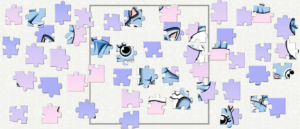

By following the tips given above, you will be able to form the background of the image that is in pink and purple colors, therefore you are left with fewer complex pieces.
7. Spot The Difference
Spot the difference is that type of puzzle which has two images that look similar but are not. There are subtle differences between the two images in terms of the number of items, different designs, and patterns used in the images, etc. This puzzle requires you to find out the differences between the two images. The level of difficulty depends on how subtly the designer of the puzzle created various differences between them or the number of differences that you need to spot between the images.
Here is an example of a spot the difference puzzle.
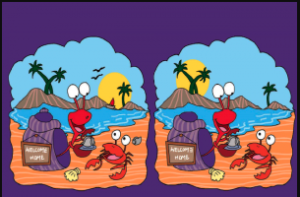
The level of difficulty for this puzzle is easy since it has fewer differences and the differences you need to spot are clear.
8. Mechanical Puzzles
The history of solving mechanical puzzles dates back to the 3rd century initially in Greece and they later got popular in various other parts of the world. A mechanical puzzle is a puzzle that is designed using various pieces (similar or different), which in turn can be manipulated in different ways to form different objects and shapes as to finish solving it. There are different subcategories under mechanical puzzles, where you will be required to separate a ring and a rope (disentanglement), assemble all the given pieces to form a perfect square (assembly and disassembly), gather all the pieces of the same color onto one side each (Rubik’s revenge), etc. Each variety has its own set of rules and its own unique way of solving it.
Tips to solve a mechanical puzzle:
- Firstly, observe the instructions given.
- There are a set of rules to follow so that it becomes easy for you to solve.
- Each mechanical puzzle has a unique way of solving it. Find them out.
- Practice. After a few times of practice, you will be able to remember the algorithms and sequences to move any piece in any direction that can lead you towards finding the solution.
Here is an example of a mechanical puzzle.
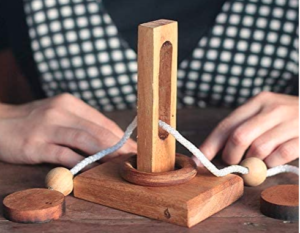
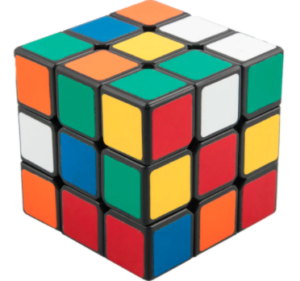
The first mechanical puzzle requires you to remove the ring that is at the bottom and the second one needs to be solved by sorting pieces of the same color onto the same side of the cube.
9. Sudoku puzzles
A Sudoku puzzle is usually one of the most favorite categories of puzzles to everyone including people of old age. A typical Sudoku puzzle is a number-based puzzle in which you will be required to fill a 9X9 grid using numbers from 1 to 9 such that each row and column of the grid do not have repeated numbers. There are nine 3X3 grids in a full sudoku puzzle and you need to make sure that each 3X3 grid also has numbers from 1 to 9 without repeating them. There are different levels of difficulty like easy, medium, hard, extreme. The number of digits already given as clues is inversely proportional to the level of difficulty, i.e; the less number of digits already given, the more difficult is the puzzle to be solved.
Tips and techniques for solving a sudoku puzzle:
- Pencil Marking. Initially use your pencil to write the most probable numbers in each box so that you are left with less number of the least probable number to be filled in.
- Scan each row and column for a cell that can be filled with only one number. This is called the single candidate technique.
- Find the triplet set in a single row or column, i.e; find out what three numbers have the probability to fit in three cells of a single row or column.
Here is an example of a sudoku puzzle.
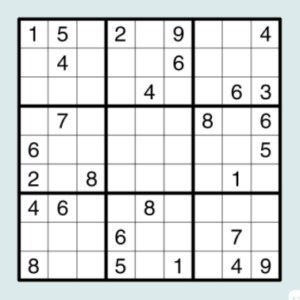
This is an example of an intermediate-level sudoku puzzle. A sudoku puzzle with more digits already provided in the grid is relatively easier to solve.
10. Cryptic Puzzles
A cryptic puzzle is a puzzle that involves a good command of the language that is used to design the puzzle. A cryptic puzzle is similar to a crossword puzzle, but it has relatively tougher clues and answers. For instance, if you take a typical crossword, the clues given to solve it are usually the straight meaning or synonym to the answer. In the case of a cryptic puzzle, the clues might be a synonym, antonym, definition, and any other closely related aspect of the answer. In other words, you will have to decrypt the encrypted clues and find out the answers to finish the puzzle.
Tips and tricks to solve a cryptic crossword puzzle:
- firstly, think simple. Every clue in a cryptic puzzle does not necessarily mean to be cryptic.
- Observe the given clue both from left to right and right to left as well.
- Divide the given clue into different portions and keenly observe. There are chances that only one or two parts of the clue will be able to lead you to get the answer.
- Think of the answer in line with the number of letters that comprise the answer given in the bracket beside each clue.
Here is an example of a cryptic crossword puzzle.
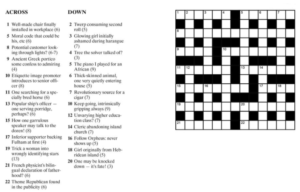
In this puzzle, the clue for 7 down is given as ” Revolutionary source of a cigar”. Keeping in mind tip number 3, revolutionary leads to the word CHE, which reflects the revolutionary leader CHE GUEVERA and a synonym for the word SOURCE is ROOT. Therefore, the answer could be CHEROOT which is a seven-letter word given beside the clue in brackets.
11. Trivia Quizzes
As the name suggests, trivia is about the questions related to various subject matters but about unimportant and general ones. To be precise, a trivia puzzle or a trivia competition is a competition between people where the competitors are asked several questions on unimportant matters and facts of different topics. Questions of one trivia puzzle can be based on one particular theme or different topics.
Tips for answering a trivia quiz:
- Think from the perspective of the creator of the puzzle.
- In some cases of trivia quizzes, wrong is right!!
- Do not get carried away by the thrill of listening to the question asked by the host. Instead, keenly observe the question and try finding different probable answers.
Here is an example of a trivia quiz.
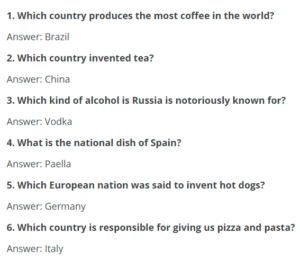
Well here, there are questions related to food and the countries associated with their production and invention. Knowing random things like the invention of hotdogs, the production of coffee, etc is trivial. However, the information you already have about them in your memory can serve the purpose of winning a trivia quiz.
12. Pattern Guessing
The name Pattern Guessing reveals that it a type of puzzle where you will be required to recognize a set pattern or a sequence or an algorithm used for designing the puzzle. If I have to keep it simpler, you need to take the reference of the first image and see through the common difference between the consecutive images to find out the algorithm and that will lead you to find the answer.
Tips for solving a pattern guessing puzzle:
- Keep the rules given by the puzzle creator in mind. Read them thoroughly.
- Observe one rule at a time.
- Practice more. Practicing makes it easier for your brain to think in a particular way that is similar to that of the creator of a pattern-guessing puzzle.
Here is an example of a pattern-guessing puzzle.
In this, you are required to choose one image in the given options that fit right to continue the series.
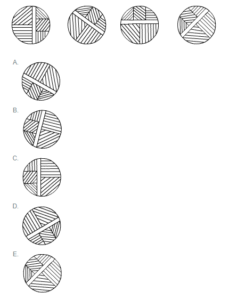
The answer for it is C. Wondering how did I do it? If you keenly observe the reference figure, i.e; the first one from the left is rotated in an anticlockwise direction with an angle of 45 degrees. So the figure provided in option C is the correct answer for the puzzle.
13. Riddles
A riddle is a statement that is designed to require one’s knowledge and intelligence in order to find out the answer for it. Usually, riddles are designed to obtain just one word as an answer for it. Riddles are used for developing language and vocabulary. Well, if there is more than one answer for it, the person to whom you asked the riddle must be creative!!
Tips for solving a riddle:
- Search for words with dual meanings and relate them with the riddle.
- Search for comparisons between different words used in the riddle.
- Find out if they are poetic or logical.
- Keep track if it is making your existing knowledge or information about something trick you.
Here is an example of a riddle.

Do not brainstorm! The answer to this is KATE. You will be able to answer this only if you followed tip number 4. Do not let the information you already have, i.e; that Kate is one of the three children, trick you.
14. Frame Puzzles
Frame puzzles are those puzzles that are similar to a jigsaw puzzle with a fixed number of pieces in different shapes, but there is a boundary for fixing all the given pieces to form a specific image. That boundary is a FRAME in the case of frame puzzles.
Here is an example of a frame puzzle.
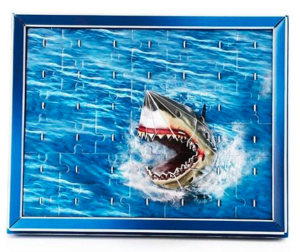
The frame puzzle here requires your kid to solve it as a regular jigsaw puzzle but within the frame provided.
15. Connect The Dots Worksheets
A connect-the-dots puzzle or a joint dots puzzle is a puzzle designed using a sequence of dots that are numbered in regular numerical order. This type of puzzle requires you to join the numbered dots one after the other to form a specific image that is used to create the puzzle. The level of difficulty depends on the number of digits and dots used for forming a sequence that in turn forms an image.
Tips for solving a connect the dots puzzle:
- Make sure to practice with puzzles having fewer dots initially.
- Keep track of the order of numbers.
- Use a pencil for the first trial of solving it.
Here is an example of a connect-the-dots puzzle.
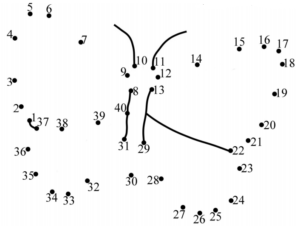
This connect-the-dots puzzle has 42 dots to be connected and the image of the butterfly is revealed.
16. Hidden Things Puzzles
A hidden things puzzle has a picture with a list of items disguised in it. It requires you to find all the things that are disguised in the figure and the level of difficulty for every hidden things puzzle differs based on the number of items disguised to design it. For an easy to intermediate level, the list of things you need to hunt for is given below the puzzle so it is easier to solve for you or there is a relatively lesser number of items hidden in the picture. There are physical worksheets and also mobile applications available online.
Tips for solving a Hidden Things Puzzle:
- Look for common items based on the theme with which the puzzle is designed.
- Search for one item at a time during initial practice.
- Check for the items in the list often and try memorizing them. You can use the memory of seeing an item in the list for picking it up while you are actually searching for another object.
Here is an example of a hidden things puzzle.
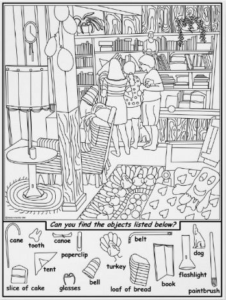
This is a hidden thing puzzle that requires you to find out various items disguised in the picture and are listed below as clues.
Types Of Puzzles For Kids
17. Sorting Puzzles
Sorting puzzle is definitely a great way to engage your kids or students in a fun activity at school or home on a weekend. Sorting puzzles are typically designed with various objects with different themes, colors, and shapes, and a specific block is allotted for each of the sets for sorting. All you need to do is take all the objects into a container, mess them up and ask your kid to sort them according to the themes and shapes. They will have to attach each of the pieces to the block allotted for each of them
Tips for making your toddler solve a sorting puzzle:
- Make sure to use one or two themes or varieties in the beginning.
- Make sure to teach your kid about them before you give them the puzzle.
- Use a sorting puzzle as a practice session for what you have taught them earlier.
Here is an example of a sorting puzzle.
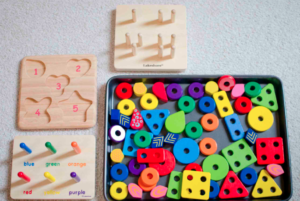
This sorting puzzle has bright colors and different objects to sort, like objects of different colors, different shapes, and rings.
18. Floor Puzzles
Floor puzzles are an easy variant of jigsaw puzzles. This type will let your kid explore problem-solving skills and are meant to be solved directly on the floor i.e; there is no specific boundary to solve them. Make sure to let them count the pieces, play with them on the floor and solve them. A variety of floor puzzles will require your kids to form a figure with the given pieces.
Tips for using floor puzzles for your kids:
- Use floor puzzles featuring their favorite characters, animals, or colors.
- Start with simpler ones first.
- Participate while they are trying to solve the puzzle.
Here is an example of a floor puzzle.
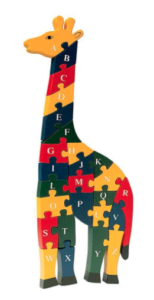
If you have a look at this image, unlike the regular jigsaw puzzle, the puzzle is designed in such a way that it requires the solver to form a figure of a Giraffe, while learning different alphabets and colors.
19. Peg Puzzles
Peg puzzles are usually meant for kids or young toddlers. As the name itself reveals, a peg puzzle consists of various pieces in different shapes and images on them, and a peg attached to each of them. This requires your toddler to hold the peg and fix the piece in the groove provided in a specific shape similar to that of the piece, into the cardboard provided.
Tips for making it interesting for your toddler to solve a peg puzzle:
- Start off with a small variant of the peg puzzle.
- Firstly, make your toddler get hold of the peg properly.
- Make sure to choose creative and interesting peg puzzles with vibrant colors.
- Sit with your kid while you ask them to solve a peg puzzle.
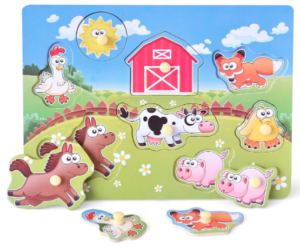
Given here is a peg puzzle with the theme of a little farm and various animals. This has interesting colors and shapes so your kids can learn a little about each of them.
20. Knob Puzzles
Knob puzzles are very much similar to peg puzzles. The difference is, a knob puzzle consists of various pieces in different shapes and images on them, and a knob attached to each of them instead of a peg. This type of puzzle requires your toddler to hold the knob and fix the piece in the groove provided in a specific shape similar to that of the piece, into the cardboard provided.
Tips for making it interesting for your toddler to solve a knob puzzle:
- Start off with a small-sized knob puzzle
- Knob puzzles are suitable for kids who attained the age of holding a thing firmly in their hands i.e; 2 to 3 years. Use them according to the age.
- Make sure to choose creative and interesting knob puzzles with vibrant colors.
- Choose knob puzzles with their favorite characters and themes.
- Sit with your kid while you ask them to solve a knob puzzle.
Here is an example of a knob puzzle.
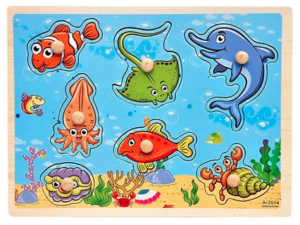
The puzzle here is water animals-themed and has its pieces attached with a knob.
Conclusion:
Types of Puzzles like cryptic, crossword, trivia, etc can be used by young adults and adults. And a few other types like peg puzzles, knob puzzles can be used for kids and toddlers. The remaining ones can be used by adults and for the kids based on different levels of difficulty set for designing the puzzles.
